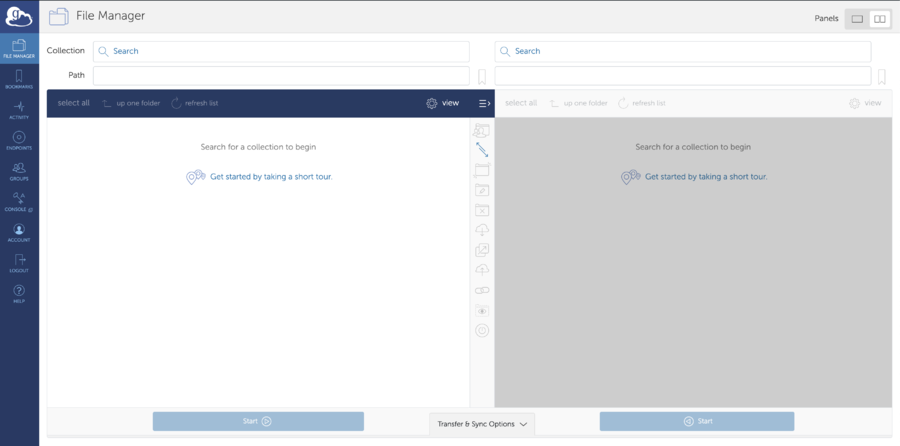How to use Globus: Difference between revisions
Jump to navigation
Jump to search
(Created page with " == Introduction == https://www.globus.org/ Globus is a non-profit service for moving, syncing, and sharing large amounts of data asynchronously in the background. Transfe...") |
No edit summary |
||
| Line 1: | Line 1: | ||
== Introduction == | == Introduction == | ||
[https://www.globus.org/ Globus] is a non-profit service for moving, syncing, and sharing large amounts of data asynchronously in the background. Transfers are done from and to, so called, endpoints. In order to perform a file transfer from one location to another using the Globus service, both ends must have an endpoint. | |||
== Step 1 == | |||
Create an account to log in to Globus. There are a couple ways: | |||
*[https://app.globus.org/ Use an Organization's login] | |||
**If you are associated to an organization in the drop down list, you can use your organization's login to create an account. | |||
**You can also sign up using a Google account or ORCiD ID | |||
*[https://www.globusid.org/create Create a Globus ID] | |||
== Step 2 == | |||
After creating an account, download [https://www.globus.org/globus-connect-personal Globus Connect Personal] (available for macOS, Linux, and Windows) | |||
[[File:Globus1.png|900px]] | |||
Revision as of 21:22, 20 August 2020
Introduction
Globus is a non-profit service for moving, syncing, and sharing large amounts of data asynchronously in the background. Transfers are done from and to, so called, endpoints. In order to perform a file transfer from one location to another using the Globus service, both ends must have an endpoint.
Step 1
Create an account to log in to Globus. There are a couple ways:
- Use an Organization's login
- If you are associated to an organization in the drop down list, you can use your organization's login to create an account.
- You can also sign up using a Google account or ORCiD ID
- Create a Globus ID
Step 2
After creating an account, download Globus Connect Personal (available for macOS, Linux, and Windows)
